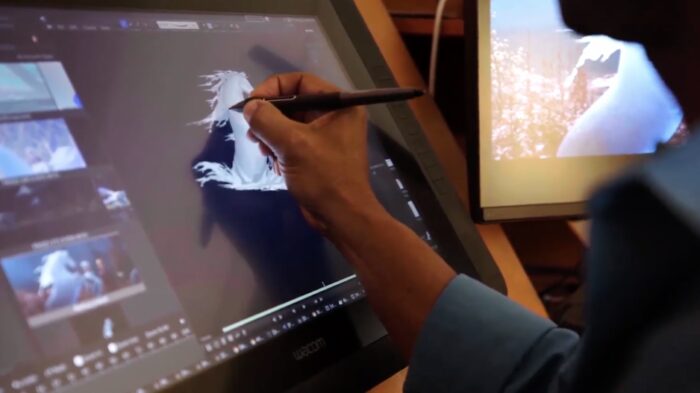
If you’re an aspiring animator, you know how daunting it can be to create high-quality animations with the same finesse as a professional. However, with the right knowledge and determination, you can learn to make animation and design work together like a well-oiled machine.
In this blog, we’ll cover the essential tips and tricks that will help you become an animation pro in no time!
Design Principles for Animation

Creating it is an art form, and the use of good design principles is essential for creating attractive, engaging animations. By following a few key design principles, animators can create professional-quality pieces of work that will impress viewers while also conveying their message.
Designers should keep in mind the following key design principles when creating animations:
- Simplicity: Simplicity is one of the most important aspects of any visual medium. Animations should feature only the necessary elements to tell the story or express the concept behind them. Animators should strive to create simple yet expressive visuals for maximum impact like Pixlr.
- Balance & Flow: Balance in animation refers to how elements are arranged and relate to each other on screen, while flow refers to how movements are created from one frame to another. When creating it, designers need to be mindful that their compositions will be read by viewers as a single body of work—and these viewers should be able to easily discern any changes that occur from frame to frame when viewing an animation.
- Readability: Animations should be created so that they are easy for viewers—such as those with visual impairments or learning disabilities—to understand and appreciate them without having any difficulty understanding what is happening on screen. For example, fonts used within animations should be easy-to-read and simple while also fitting in with the overall concept or message presented with each animation piece.
- Contrast & Color: Contrast can add drama and emphasize details within it, while color can evoke different emotions or moods in viewers. When designing animations animators must pay close attention to color theory and use colors carefully in order to ensure that it conveys the intended message effectively.
By following these key design principles when creating animations, designers can ensure they are delivering a powerful visual experience and engaging their audiences successfully. Professional animators must strive towards encompassing these principles into their pieces so that their work stands out from the rest and leaves a lasting impression on viewers!
Tips for Creating Professional-Quality Animations

Creating high-quality ones can seem intimidating at first, but with the right tools and techniques, anyone can produce professional-level content. This guide outlines some of the best tips and tricks to create animations like a pro.
- Design Principles: It starts with a great design. It is important to use strong visual principles such as balance and contrast to create effective motion designs that have maximum impact on the viewer. Use basic rules such as symmetry and scale when setting up elements in your scene, to give a sense of order and stability throughout your project.
- Composition: Just as with any other type of art, composition is essential for it. A good understanding of how framing affects the story will help you keep your focus on the main subject or action within each scene, resulting in a smoother transition between shots. Consider how elements interact with each other and use techniques like parallax to create depth within 2D environments.
- Timing: Timing is often overlooked, but it makes all the difference when it comes to creating an impactful animation. Breaking down movements into keyframes helps improve accuracy and flow so that characters look more realistic without sacrificing quality for speed or vice versa. Use dynamic poses to accentuate movements or moments in time so animations look fluid even when working on limited resources. Pay extra attention to timing when working with multiple characters interacting together since they tend to be more time consuming than single character scenes.
- Sound Design & Music: Take some cues from film industry professionals when implementing sound into your projects; think about subtle sounds during movements which might enhance expressions without being intrusive or overbearing music that obscures other elements of a scene. Taking emotions expressed by characters into account will ensure sound becomes part of reflection rather than distract from it. Loop ready music tracks can be conveniently found online depending on the style.
Animation Production Process

When creating one that you can be proud of, there are many steps in the production process. While different studios may have slightly different processes, most studios follow a general guideline when producing an animated project. The process generally starts with scriptwriting, concept art and storyboarding, followed by character design and layout design.
After that comes the full animation process which includes all the key poses, breakdowns and in-betweens for characters as well as matte paintings for backgrounds, special effects work and final rendering before compositing. Finally, sound effects, music and post production give the finished product extra value.
Each step of production relies on a team of talented professionals to bring the best out of each work of art. It involves accurate timing so that motion moves smoothly between key frames and everything is kept within a certain style or look that is specified by the director or lead designer. It also requires knowledge of storytelling techniques to ensure that the flow from scene to scene is seamless, logical and easy to follow for viewers.
As this requires hands-on experience from both animators and designers at each step of production along with close collaboration between them makes an efficient workflow even more important. Working closely, forming teams with diverse yet interrelated skill sets and keeping up with new technologies are all great ways we can ensure our studio produces efficient animations every time!
Conclusion
Finally, don’t forget that a good story always comes first – your characters and settings should account for the majority of work in each animation you produce. Their elements should exist to serve that story rather than drive it, so be sure you are focused on every step of its development as you move forward! With these tools in hand, now you’re ready to take on the world of animation like a pro! Good luck!





